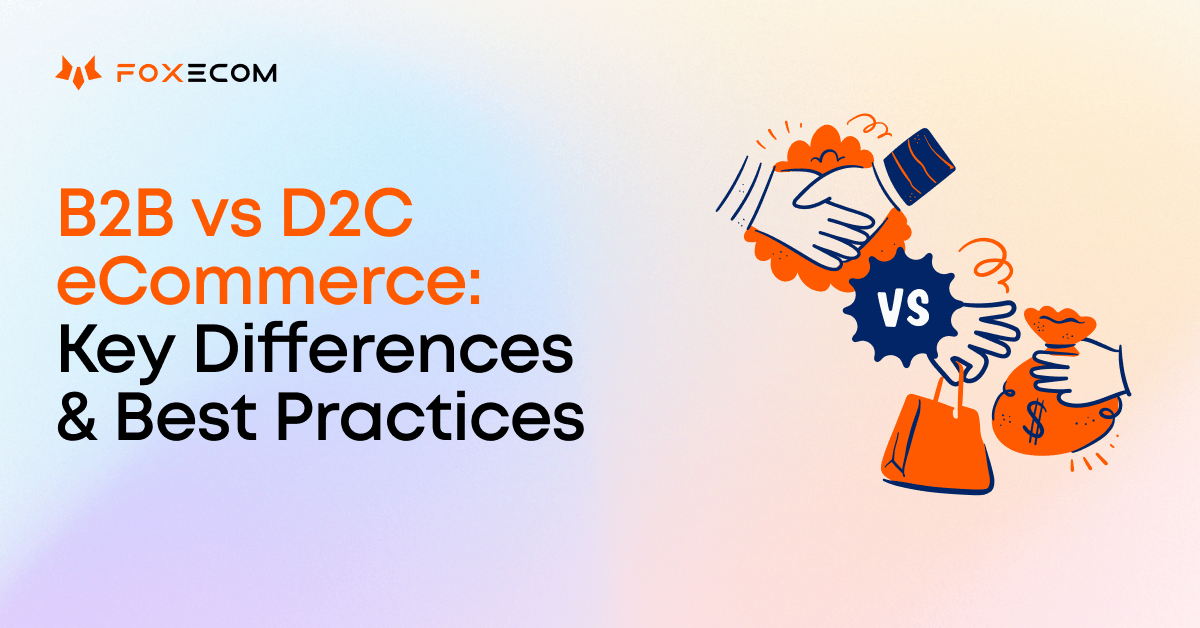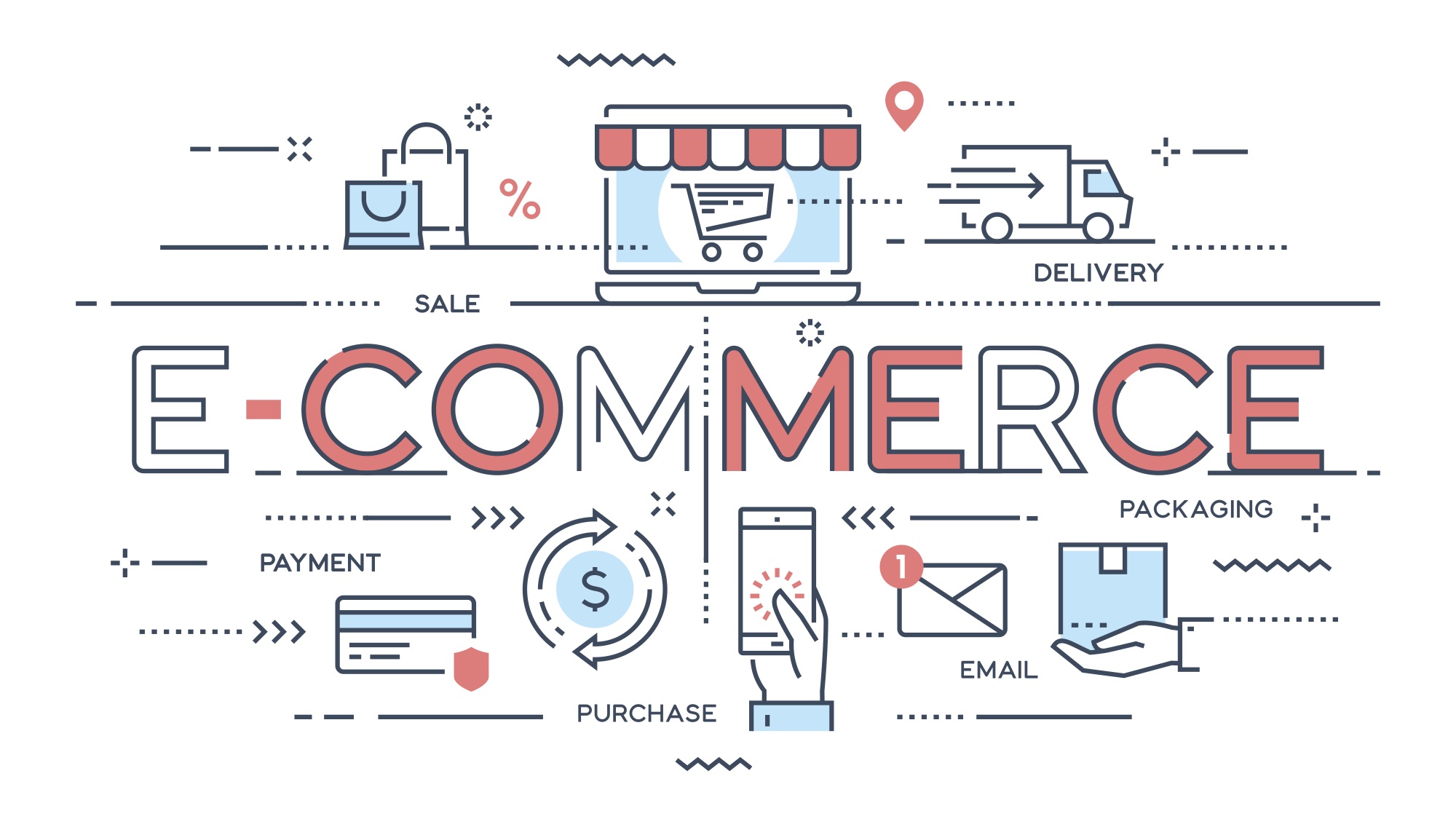Checking out the Possible of D2C Ecommerce: A Comprehensive Guide for Services
The D2C ecommerce design presents a considerable shift in exactly how brands engage with customers. It enables firms to bypass conventional retail channels, cultivating deeper connections and possibly enhanced revenue margins. This strategy is not without its intricacies. Understanding the subtleties of D2C ecommerce is essential for brands aiming to grow. What approaches can they embrace to browse this progressing landscape efficiently? The answers may redefine their business approaches.
Recognizing the D2C Ecommerce Model

Trick Perks of D2C Ecommerce for Brands
The D2C ecommerce design offers brands significant advantages, specifically concerning raised earnings margins. By removing middlemans, business can maintain a bigger share of sales income. In addition, this direct relationship with clients promotes enhanced brand name commitment, encouraging repeat purchases and long-term interaction.
Increased Revenue Margins

Improved Brand Loyalty
Structure on the monetary benefits of D2C ecommerce, enhanced brand name loyalty arises as an additional necessary advantage for firms involving straight with customers. By developing a straight connection, brands can cultivate deeper connections with their clients, acquiring insights into preferences and habits. This straight interaction permits even more customized advertising and marketing approaches, which reverberate strongly with customers. Additionally, brand names have the possibility to control their messaging and client experience, enhancing brand name worths and building count on. When consumers feel an individual link, they are more probable to return, support for the brand, and join area involvement. Ultimately, enhanced brand name commitment not only drives repeat purchases but also cultivates an enthusiastic client base, further strengthening a brand name's placement on the market.
Difficulties Dealt With by D2C Brands
D2C brands run into a number of substantial difficulties that can influence their success. Inventory monitoring issues can bring about equip shortages or excess, complicating procedures and customer complete satisfaction. Furthermore, marketing spending plan restraints typically limit the capability to effectively get to and involve target market.
Supply Administration Issues
Effective supply monitoring offers a formidable difficulty for several brand names operating in the direct-to-consumer (D2C) room. These brands frequently come to grips with varying need, which can cause overstock or stockouts, inevitably affecting consumer complete satisfaction and revenue. Furthermore, the lack of advanced inventory tracking systems can cause inconsistencies between real stock levels and reported data, making complex order fulfillment. The varied array of products D2C brands normally offer likewise makes complex inventory monitoring, as variations in styles, sizes, and colors call for more thorough oversight. In addition, lots of D2C organizations may have problem with limited warehousing capacities, bring about inefficient use of room and sources. Consequently, reliable stock monitoring stays a crucial hurdle for D2C brands going for lasting growth and functional effectiveness.
Advertising And Marketing Budget Constraints
Maneuvering advertising budget plan restraints is a significant difficulty for numerous direct-to-consumer (D2C) brand names. Limited economic sources frequently restrict these business' ability to spend in all-encompassing advertising strategies, resulting in lowered visibility in a competitive market. D2C brand names often grapple with the need to optimize return on financial investment (ROI) while targeting specific target markets properly. This obstacle is worsened by view publisher site increasing prices in electronic marketing and the need to designate funds across numerous networks, including social media, online search engine, and e-mail advertising. Consequently, several D2C brands have to innovate cost-efficient advertising services, leveraging natural development methods and influencer collaborations. Ultimately, successfully navigating these budget plan restraints is vital for maintaining growth and achieving long-lasting productivity in the evolving ecommerce landscape.
Strategies for Building a Successful D2C Ecommerce Business
As customers progressively look for direct links with brands, establishing an effective D2C ecommerce company calls for a strategic technique that prioritizes consumer interaction and trust. One effective approach is to produce compelling brand name narratives that resonate with target audiences, fostering psychological connections. Utilizing social media platforms can enhance presence and assist in two-way communication, allowing brand names to engage straight with customers.Moreover, individualized experiences through tailored advertising and marketing efforts can greatly boost client retention and commitment. Implementing loyalty programs and providing special bargains can even more incentivize repeat purchases.Streamlining the acquiring procedure is necessary, making certain an easy to use user interface that improves the shopping experience. In addition, clear interaction concerning shipping and returns develops trust and motivates consumer confidence.Finally, actively looking for customer comments and replying to it shows a commitment to renovation and customer complete satisfaction, critical elements in the competitive D2C landscape.
Leveraging Innovation for Boosted Customer Experience
In today's affordable D2C ecommerce landscape, technology plays a pivotal duty fit consumer experiences. Companies increasingly utilize advanced devices such Our site as expert system, chatbots, and personalized algorithms to improve communications and simplify the shopping procedure. By integrating these technologies, brands can provide tailored product suggestions based upon private choices and buying actions, fostering an extra engaging experience.Moreover, responsive site layouts and mobile applications guarantee that clients can access solutions effortlessly across various gadgets. Boosted repayment remedies, including one-click checkouts and electronic pocketbooks, further streamline deals, making it easier for consumers to make purchases.Data analytics also enables companies to gather insights into consumer actions, enabling continuous renovation of offerings and solutions. Generally, leveraging modern technology not only improves client contentment but likewise cultivates commitment, inevitably driving lasting success in the D2C ecommerce industry.
Advertising Tactics to Drive D2C Sales
Just how can brand names successfully catch the focus of consumers in a saturated market? To thrive in the direct-to-consumer (D2C) landscape, brand names must utilize targeted marketing strategies. Utilizing social media platforms, brands can involve customers through interactive material, influencer partnerships, and user-generated messages. Customized email projects can also promote a feeling of connection, using customized promotions based on consumer habits and preferences.Moreover, narration plays a crucial function in differentiating a brand's narrative, making it relatable and unforgettable. Brand names should invest in search engine optimization (SEO) to improve exposure, guaranteeing their items are quickly visible online. In addition, leveraging data analytics allows services to fine-tune their advertising and marketing strategies and recognize customer trends better. Ultimately, a multi-channel strategy that incorporates creative thinking with data-driven understandings can significantly boost D2C sales, enabling brands to stand apart in a congested marketplace.
Future Patterns in D2C Ecommerce
With the rapid development of innovation and consumer preferences, the future of D2C ecommerce is positioned for considerable change. Arising fads indicate a shift towards hyper-personalization, where brands leverage information analytics to tailor offerings to specific consumer requirements. This modification enhances consumer experiences, fostering commitment and engagement.Moreover, sustainability is coming to be a vital element, with customers progressively favoring brand names that focus on environment-friendly practices - D2C Ecommerce Agency. Business are anticipated to take on transparent supply chains and sustainable materials to satisfy this demand.The assimilation of expert system and boosted truth will furthermore reinvent the buying experience, permitting consumers to visualize products in their atmospheres before purchase. Furthermore, social business is expected to expand, as systems like Instagram and TikTok promote seamless buying experiences straight within social media.These trends collectively indicate a dynamic future for D2C ecommerce, highlighting customer-centric methods and ingenious technologies that redefine consumer interactions
Often Asked Inquiries
What Industries Advantage A Lot Of From D2C Ecommerce?
The existing inquiry highlights sectors that grow via direct-to-consumer (D2C) ecommerce. Extremely, fashion, beauty, electronic devices, and food fields leverage D2C designs to raise brand commitment, enhance customer relationships, and optimize profit margins successfully.
How Do Delivering Expenses Impact D2C Pricing Methods?
Shipping prices greatly affect D2C rates approaches. Companies must balance these expenses with go to this website competitive pricing, thinking about client assumptions and profit margins. Reliable monitoring of shipping can improve customer complete satisfaction and drive sales in direct-to-consumer designs.
What Settlement Alternatives Should D2C Businesses Deal?
D2C organizations must use varied settlement options, consisting of credit/debit cards, electronic pocketbooks, and purchase now, pay later on services. This variety boosts client convenience, increases conversion rates, and deals with different customer choices in the on-line purchasing landscape.
How Can D2C Brands Deal With Customer Returns Effectively?
D2C brand names can deal with client returns successfully by implementing straightforward return policies, supplying prepaid shipping tags, and guaranteeing punctual reimbursements (D2C Ecommerce Agency). Clear interaction and streamlined processes enhance customer satisfaction and urge repeat service
What Lawful Considerations Exist for D2C Ecommerce Procedures?
Legal factors to consider for D2C ecommerce operations include conformity with customer defense laws, information personal privacy regulations, copyright civil liberties, and taxes needs. Brands should navigate these intricacies to prevent legal challenges and ensure smooth operations. By eliminating middlemans, D2C brand names can use competitive rates and cultivate a more intimate connection with their customers.The D2C design is defined by its dependence on digital systems, allowing brands to utilize social media, online marketplaces, and their own websites to involve with consumers straight. D2C ecommerce helps with the collection of important client information, making it possible for brands to customize their offerings and marketing methods effectively, inevitably driving sales and boosting margins. Additionally, brand names have the possibility to regulate their messaging and client experience, strengthening brand name values and developing trust fund. As consumers progressively seek direct links with brand names, developing a successful D2C ecommerce service calls for a calculated method that prioritizes consumer involvement and trust. D2C brands can manage consumer returns efficiently by implementing straightforward return policies, using prepaid delivery labels, and guaranteeing timely refunds.